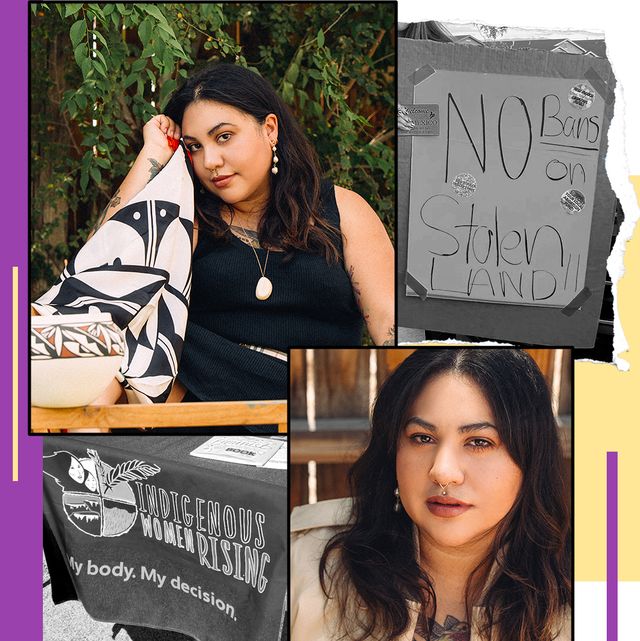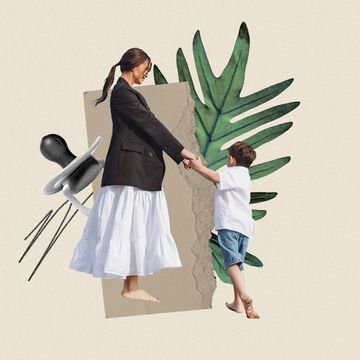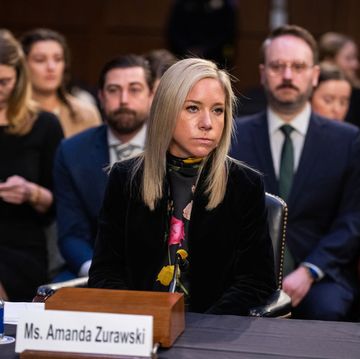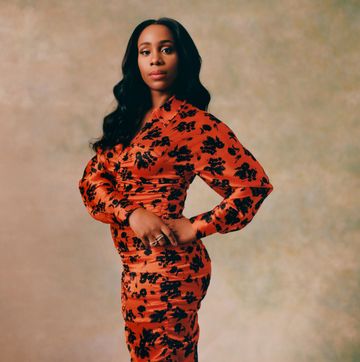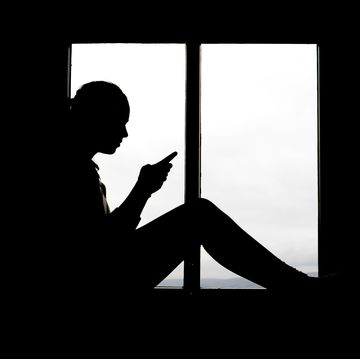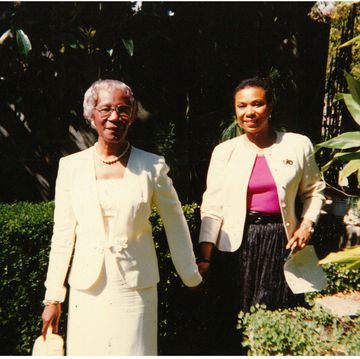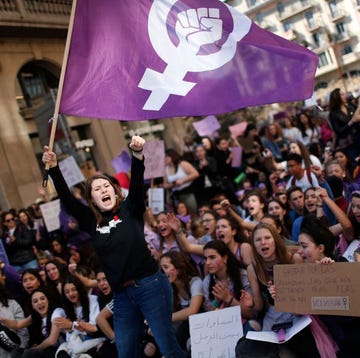At 13 weeks pregnant, Rae Lorenzo ended up in the emergency room with contractions, extreme pain, and excessive bleeding. “I didn’t fully understand my rights as a patient or the protocols of hospitals—what they’re legally obligated to do or how they can restrict care based on personal beliefs,” says Lorenzo, a 32-year-old queer New Mexico reproductive rights activist (Mescalero Apache/Laguna Pueblo/Xicana) who uses the pronouns they/them.
As the pain become more and more unbearable, it became clear to them that an abortion was necessary. But the white male ER doctor refused, telling Lorenzo: “I know what you need right now, but I can’t help you.” They were left alone to wait it out, bleeding through the hospital bed sheets and suffering without proper pain management. It took 90 minutes for a female obstetrician to step in and provide the necessary abortion care. Lorenzo calls the experience, which happened back in 2013, “dehumanizing.”
They left the hospital feeling bitter, heartbroken, and utterly alone—and wondering if anyone else felt the same after an abortion. “Growing up as a Native person, you don’t hear about miscarriage, abortion, birth, breastfeeding or anything having to do with our reproductive health because of the stigma,” Lorenzo says. With the aim to create a safe space for Indigenous people to share their own experiences—on their terms—as an act of both resistance and self-love, Lorenzo founded Indigenous Women Rising (IWR), a nonprofit offering the nation’s only abortion fund dedicated to Native Americans. “I wanted us to be able to share those stories with each other using our own words,” Lorenzo says. “A lot of these feminist movements over the decades haven’t made space for Indigenous experiences.”
Unfortunately, Lorenzo’s abortion experience isn’t unique. Native Americans face both discrimination in conventional healthcare settings and disproportionately poor health outcomes. Indigenous women are more than twice as likely to die from pregnancy-related causes, and Native infants die at nearly twice the rate of their white counterparts. More broadly, Indigenous women face the highest rates of rape and sexual assault in the U.S., are murdered at rates up to 10 times the national average, and typically die 12 years earlier than white women. (Accurate national statistics about Native American abortion rates are still not available.) Experts attribute many of these disparities to systemic racism, limited healthcare access, and the pervasive poverty that persists after centuries of oppression.
In Indigenous communities, the need for better reproductive healthcare services long predates the Supreme Court’s reversal of Roe v. Wade this summer. “Roe v. Wade has never been a reality for Native people since so many of us, whether we live on a reservation or in the city, rely on Indian Health Service,” Lorenzo says, referring to the much-criticized government agency that provides health services to tribal communities. “And because of the Hyde Amendment, it’s impossible for us to access abortion care.” Since 1976, the legislation has barred the use of federal funds for abortion, except in some narrowly specific instances—acting as a de facto ban for those who depend on IHS, Medicaid, or Medicare.
Lorenzo can pinpoint the exact moment they realized they could fight back against injustice. It was 2008, during their freshman year at the University of New Mexico. Then-candidate Barack Obama was giving a speech just 10 days before his historic presidential election. If he could do it, so could Lorenzo: “I remember crying and feeling so inspired that maybe one day a queer Native kid could be president.” Lorenzo began volunteering with the Democratic Party of New Mexico, and was later selected as a fellow for Obama’s 2012 re-election campaign under Deb Haaland, who is now the U.S. Secretary of the Interior. The following year, Lorenzo served as volunteer coordinator for Respect ABQ Women, a campaign working to block a late-term abortion ballot initiative in Albuquerque. But soon enough, Lorenzo went from advocating for abortion rights to needing one. Eight weeks into their pregnancy, doctors told them the pregnancy was no longer viable and that it would terminate on its own.
“I was told that if I couldn’t stand up straight because of the pain, or if I was soaking more than two pads an hour for two hours with blood, [only then did I need] to go to the emergency room,” they explain. The message was very clear: The situation had to be dire for anything to be done. “Now I know I could’ve become septic and died from an internal infection from not getting abortion care,” they say. “It’s so dehumanizing looking back on it.”
With a mission of ensuring safe reproductive healthcare for Native communities, Lorenzo founded IWR in 2014. Early grassroots efforts focused on raising awareness about the barriers Native Americans face in accessing Plan B. Others wanted to join in their mission, and the IWR staff grew to become an all-BIPOC team of eight. In 2018, IWR was invited to participate in MIT’s “Make the Breast Pump Not Suck” hackathon, a summit for equity-centered innovation in postpartum healthcare. Lorenzo developed a reimagined version of the traditional two-layer belted Pueblo dress to make breastfeeding easier, which thrust IWR into the national spotlight.
Suddenly, Lorenzo was fielding Instagram DMs asking for assistance. Inspired, they reached out to the National Network of Abortion Funds to help set up a dedicated abortion fund for Native Americans. Today, IWR has a monthly budget of $20,000 to cover what Lorenzo calls “wraparound care.” It means that it addition to covering abortion procedures, the nonprofit also helps with travel, lodging, food, childcare, and after-care costs. Since the passing of Texas’s S.B. 8 six-week abortion ban and the overturning of Roe, they’ve seen a surge in both abortion fund applications and in related costs as the barriers Native people face in seeking safe abortion care are exacerbated.
“What we’re seeing is that the longer people have to wait to get an appointment or to travel, the further along they are, so the more expensive their procedure is going to be and the longer they’re going to have to stay in another city or state because the procedure differs throughout a pregnancy,” Lorenzo says. A first-trimester abortion, for example, might cost $400 to $700, while a second-trimester procedure can cost $3,000.
This year alone, IWR has already helped fund more than 450 abortion fund requests. “It’s getting hard for us to keep up,” says Lorenzo. “But our staff is more precious than gold. Nothing compares to the compassionate, loving care they provide to our clients all over the country.” They are supported by hundreds of volunteers nationwide, who assist with initiatives like sending recent clients care packages and “abortion love letters” with messages like “You are not alone” and “You made the right decision for yourself.” Seeing a need, IWR recently opened up its abortion fund to marginalized Black and immigrant groups who, much like tribal communities, have long faced the insidious impacts of U.S. imperialism.
In the days after Roe was overturned, desperate pleas cropped up on social media for Native communities to open abortion clinics on reservations, illustrating a lack of understanding of what tribal sovereignty really is, activist Crystal Echo Hawk explained in a recent essay for ELLE. Lorenzo agrees: “It’s racist, ridiculous, and ignorant as hell.” Tribal land is “not just a place where you can come break laws,” Lorenzo says. “We still have to abide by state laws and pay taxes. We also have tribal governments run by men who are hardly willing to talk with us about our periods. You really think they’re going to spend money litigating abortion in the courts—especially when we can barely protect our own land, water, and infrastructure? Non-Natives didn’t give a shit before, but now that there’s something impacting white women, they care.”
Similarly, Lorenzo is disgusted by politicians using Roe to drive voters to the polls this November for the midterm elections. “We already voted in 2020 and we voted Democrat,” they explain, “but the Democratic Party continues to hold these social issues hostage by not seizing power when they can. There’s so much shame against Native, Black, and Latino people who don’t vote because of their material conditions. But having a safe place to live, education, food and clean water are all basic human rights—no one should feel like those things hinge upon whether or not they vote.”
For Lorenzo, reproductive sovereignty is synonymous with land sovereignty. “It’s not just about abortion; it’s about our right as Indigenous people to steward our land the way we were told to by the Creator,” they say, referring to the master spirit many Native communities believe made the universe. “In our view of reproductive justice, it all comes down to who is managing the land in the best way for Native children, so they can make decisions about their own bodies.”
Lorenzo dreams of a future where IWR is no longer needed. “I never would have thought we would get as big as we are,” they say in a moment of quiet contemplation. “I was just depressed about a pregnancy and an abortion gone wrong.” It’s an optimistic but not entirely impossible notion, given the recent uptick of landback deals and the rise of Native American representation in both politics and pop culture. But for now, IWR remains a desperate necessity. “As Indigenous people, we have to be mindful that childhood is sacred and our healing is so important,” Lorenzo says. “What we don’t address now makes the burden greater for our children. That’s a huge part of why I do what I do.”
